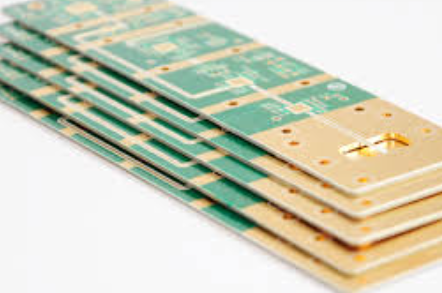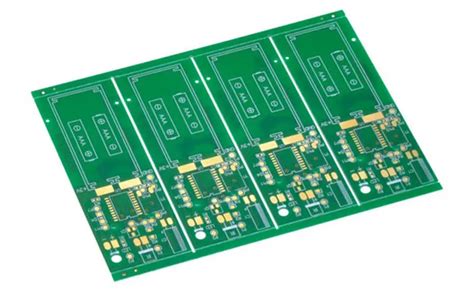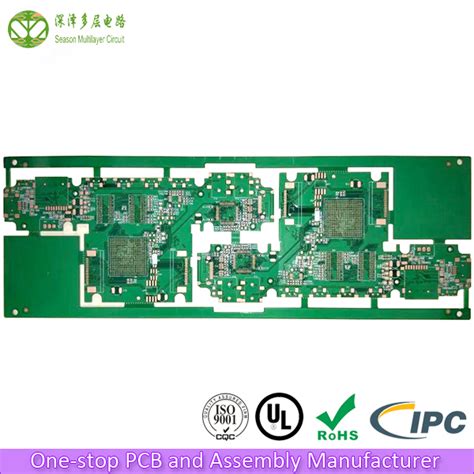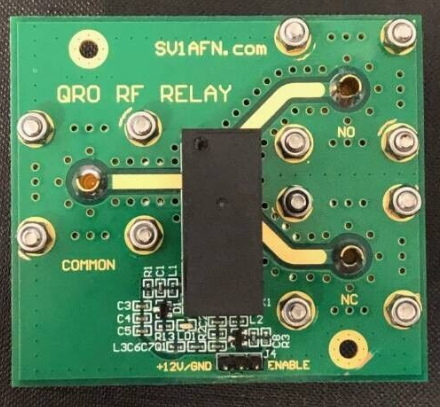Metal core vs solid wire
Advantages And Disadvantages Of Metal Core Vs Solid Wire
When considering the advantages and disadvantages of metal core versus solid wire, it is essential to understand the distinct characteristics and applications of each type. Metal core wire, often referred to as flux-cored wire, is a type of welding wire that contains a core filled with flux. This flux helps to shield the weld pool from contaminants and can provide additional alloying elements to the weld. On the other hand, solid wire is a homogeneous wire without any internal flux, typically used in gas metal arc welding (GMAW) processes.
One of the primary advantages of metal core wire is its ability to produce high-quality welds with excellent mechanical properties.
The flux within the core can enhance the weld’s strength, toughness, and resistance to cracking. Additionally, metal core wire often allows for higher deposition rates compared to solid wire, which can lead to increased productivity and efficiency in welding operations. This is particularly beneficial in industrial settings where time and cost savings are critical.
Moreover, metal core wire can be more forgiving when it comes to welding on dirty or contaminated surfaces.
The flux helps to clean the weld area, reducing the likelihood of defects such as porosity or inclusions. This makes metal core wire a suitable choice for applications where surface preparation may be challenging or time-consuming.
However, metal core wire also has its disadvantages.
One significant drawback is the increased cost compared to solid wire. The manufacturing process for metal core wire is more complex, leading to higher prices. Additionally, the presence of flux can result in slag formation, which requires additional cleaning after welding. This post-weld cleaning can add to the overall time and labor costs, potentially offsetting some of the productivity gains.
In contrast, solid wire offers several advantages that make it a popular choice for many welding applications.
One of the most notable benefits is its simplicity and ease of use. Solid wire does not produce slag, eliminating the need for post-weld cleaning and reducing the risk of slag inclusions in the weld. This can result in cleaner, more aesthetically pleasing welds, which is particularly important in applications where appearance is a critical factor.
Furthermore, solid wire is generally less expensive than metal core wire, making it a cost-effective option for many welding projects.
Its straightforward composition also means that it is less prone to issues related to flux degradation or contamination, ensuring consistent weld quality over time.
However, solid wire is not without its disadvantages. It typically requires a shielding gas to protect the weld pool from atmospheric contamination, which can add to the overall cost and complexity of the welding process. Additionally, solid wire may not perform as well on dirty or contaminated surfaces, increasing the likelihood of weld defects. This necessitates thorough surface preparation, which can be time-consuming and labor-intensive.
In conclusion, both metal core and solid wire have their respective advantages and disadvantages, making them suitable for different applications and conditions. Metal core wire excels in providing high-quality welds with enhanced mechanical properties and increased productivity, but it comes at a higher cost and requires post-weld cleaning. Solid wire, on the other hand, offers simplicity, cost-effectiveness, and clean welds without slag, but it may require additional surface preparation and shielding gas. Ultimately, the choice between metal core and solid wire will depend on the specific requirements of the welding project, including factors such as cost, surface condition, and desired weld properties.

Performance Comparison: Metal Core Vs Solid Wire In Welding
When comparing the performance of metal core wire and solid wire in welding, it is essential to consider various factors that influence the quality, efficiency, and overall outcome of the welding process. Both types of wire have distinct characteristics that make them suitable for specific applications, and understanding these differences can help in selecting the appropriate wire for a given task.
To begin with, metal core wire, also known as metal-cored wire, is a tubular wire filled with metallic powders.
This composition allows for a higher deposition rate compared to solid wire, which is a single, homogeneous strand of metal. The increased deposition rate of metal core wire translates to faster welding speeds and higher productivity, making it an attractive option for large-scale industrial applications where time and efficiency are critical.
In addition to productivity, the quality of the weld is a crucial consideration.
Metal core wire tends to produce less spatter and generates a more stable arc than solid wire. This results in cleaner welds with fewer defects, reducing the need for post-weld cleaning and rework. The reduced spatter also contributes to a safer working environment, as there is less risk of burns and other injuries associated with flying molten metal.
Another significant advantage of metal core wire is its ability to handle gaps and poor fit-up more effectively than solid wire.
The metallic powders within the core can bridge gaps and accommodate variations in joint fit-up, leading to more consistent welds even in less-than-ideal conditions. This flexibility can be particularly beneficial in applications where precision is challenging to achieve, such as in field repairs or when working with irregularly shaped components.
However, it is important to note that metal core wire is generally more expensive than solid wire.
The higher cost can be a limiting factor for smaller operations or projects with tight budgets. Additionally, metal core wire requires specific equipment and settings to achieve optimal performance, which may necessitate additional investment in welding machinery and training for operators.
On the other hand, solid wire is often preferred for its simplicity and versatility.
It is compatible with a wide range of welding processes, including Gas Metal Arc Welding (GMAW) and Metal Inert Gas (MIG) welding. Solid wire is also easier to handle and store, as it does not have the same sensitivity to moisture and contamination as metal core wire. This makes it a practical choice for various applications, from automotive repair to construction.
Moreover, solid wire typically produces a smoother and more aesthetically pleasing weld bead.
This can be advantageous in applications where the appearance of the weld is a critical factor, such as in visible joints on consumer products or architectural structures. The uniform composition of solid wire also ensures consistent mechanical properties throughout the weld, which can be crucial for meeting stringent quality standards.
In conclusion, the choice between metal core wire and solid wire in welding depends on the specific requirements of the project. Metal core wire offers higher productivity, better gap-bridging capabilities, and reduced spatter, making it ideal for large-scale industrial applications. Conversely, solid wire provides versatility, ease of use, and cost-effectiveness, making it suitable for a wide range of welding tasks. By carefully considering the advantages and limitations of each type of wire, welders can make informed decisions that enhance the quality and efficiency of their work.
Cost Analysis: Metal Core Vs Solid Wire
When conducting a cost analysis of metal core versus solid wire, it is essential to consider various factors that influence the overall expenses associated with each type of wire. Both metal core and solid wire have distinct characteristics that impact their cost-effectiveness in different applications. By examining the material costs, manufacturing processes, and operational efficiencies, one can gain a comprehensive understanding of the financial implications of choosing between these two types of wire.
To begin with, the material costs of metal core and solid wire differ significantly.
Metal core wire, which typically consists of a metal core surrounded by a layer of another material, often incurs higher raw material costs due to the complexity of its composition. The core material, which can be made from metals such as steel or aluminum, combined with the outer layer, adds to the overall expense. In contrast, solid wire, composed of a single homogeneous material, generally has lower raw material costs. This simplicity in composition translates to a more straightforward and cost-effective procurement process.
Furthermore, the manufacturing processes for metal core and solid wire also play a crucial role in their cost analysis.
The production of metal core wire involves multiple steps, including the creation of the core, the application of the outer layer, and the subsequent bonding of these components. Each of these steps requires specialized equipment and skilled labor, contributing to higher manufacturing costs. On the other hand, the production of solid wire is relatively straightforward, involving the drawing of a single material through a die to achieve the desired diameter. This streamlined process results in lower manufacturing costs and, consequently, a more economical product.
In addition to material and manufacturing costs, operational efficiencies must be considered when analyzing the cost implications of metal core versus solid wire.
Metal core wire often offers superior performance characteristics, such as increased strength, flexibility, and resistance to environmental factors. These attributes can lead to longer service life and reduced maintenance costs, which may offset the higher initial expenses. For instance, in applications where durability and reliability are paramount, the investment in metal core wire may prove to be more cost-effective in the long run.
Conversely, solid wire, while generally less expensive upfront, may not provide the same level of performance as metal core wire.
In environments where the wire is subjected to significant stress or harsh conditions, solid wire may require more frequent replacements and maintenance, leading to higher long-term costs. However, in less demanding applications, the lower initial cost of solid wire can result in substantial savings without compromising performance.
Moreover, it is important to consider the specific requirements of the application when conducting a cost analysis.
For example, in the automotive industry, where weight reduction is a critical factor, metal core wire’s ability to provide high strength with reduced weight can lead to significant cost savings in fuel efficiency and overall vehicle performance. In contrast, for household electrical wiring, where the demands are less stringent, solid wire’s lower cost and adequate performance make it a more economical choice.
In conclusion, the cost analysis of metal core versus solid wire involves a careful evaluation of material costs, manufacturing processes, and operational efficiencies. While metal core wire may have higher initial expenses, its superior performance characteristics can lead to long-term savings in specific applications. Conversely, solid wire’s lower upfront cost makes it an attractive option for less demanding environments. Ultimately, the choice between metal core and solid wire should be guided by the specific requirements and financial considerations of the intended application.

Applications And Suitability: Metal Core Vs Solid Wire
When considering the applications and suitability of metal core versus solid wire, it is essential to understand the distinct characteristics and advantages each type offers. Metal core wire, also known as flux-cored wire, is designed with a metal sheath surrounding a core of flux material. This construction allows for enhanced performance in specific welding applications. On the other hand, solid wire, typically composed of a single, homogeneous metal strand, is widely used in various welding processes due to its simplicity and versatility.
One of the primary advantages of metal core wire is its ability to provide higher deposition rates compared to solid wire.
This characteristic makes it particularly suitable for high-production environments where efficiency and speed are paramount. The flux core within the wire facilitates a more stable arc and reduces spatter, resulting in cleaner welds and less post-weld cleanup. Consequently, industries such as automotive manufacturing, heavy equipment production, and shipbuilding often favor metal core wire for its productivity benefits.
In contrast, solid wire is renowned for its versatility and ease of use.
It is compatible with a wide range of welding processes, including Gas Metal Arc Welding (GMAW) and Tungsten Inert Gas (TIG) welding. This adaptability makes solid wire an excellent choice for general fabrication, repair work, and applications where precision and control are critical. Additionally, solid wire is typically less expensive than metal core wire, making it a cost-effective option for many welding projects.
Transitioning to the consideration of weld quality, metal core wire offers several advantages.
The flux core within the wire helps to shield the weld pool from atmospheric contamination, resulting in improved weld integrity and reduced porosity. This feature is particularly beneficial when working with thicker materials or in outdoor environments where wind and other elements can compromise weld quality. Furthermore, the flux core can provide additional alloying elements, enhancing the mechanical properties of the weld and making it suitable for demanding applications such as structural steel fabrication and pipeline construction.
Conversely, solid wire excels in applications where precision and control are paramount.
Its homogeneous composition ensures consistent performance, making it ideal for thin materials and intricate welds. Solid wire produces a smooth, stable arc that allows for precise control over the weld bead, reducing the risk of burn-through and distortion. This characteristic is particularly advantageous in industries such as aerospace, electronics, and medical device manufacturing, where weld quality and precision are of utmost importance.
Another critical factor to consider is the ease of use and operator skill level required for each type of wire.
Metal core wire, with its higher deposition rates and reduced spatter, can be more forgiving and easier to use for less experienced welders. The flux core also helps to stabilize the arc, making it easier to maintain a consistent weld bead. In contrast, solid wire requires a higher level of skill and precision, particularly when working with thin materials or performing intricate welds. Experienced welders often prefer solid wire for its versatility and ability to produce high-quality welds in a variety of applications.
In conclusion, the choice between metal core and solid wire depends on the specific requirements of the welding application. Metal core wire offers higher deposition rates, reduced spatter, and improved weld quality, making it suitable for high-production environments and demanding applications. Solid wire, with its versatility, precision, and cost-effectiveness, is an excellent choice for general fabrication, repair work, and applications requiring precise control. Understanding the unique advantages and limitations of each type of wire is essential for selecting the most appropriate option for a given welding project.







